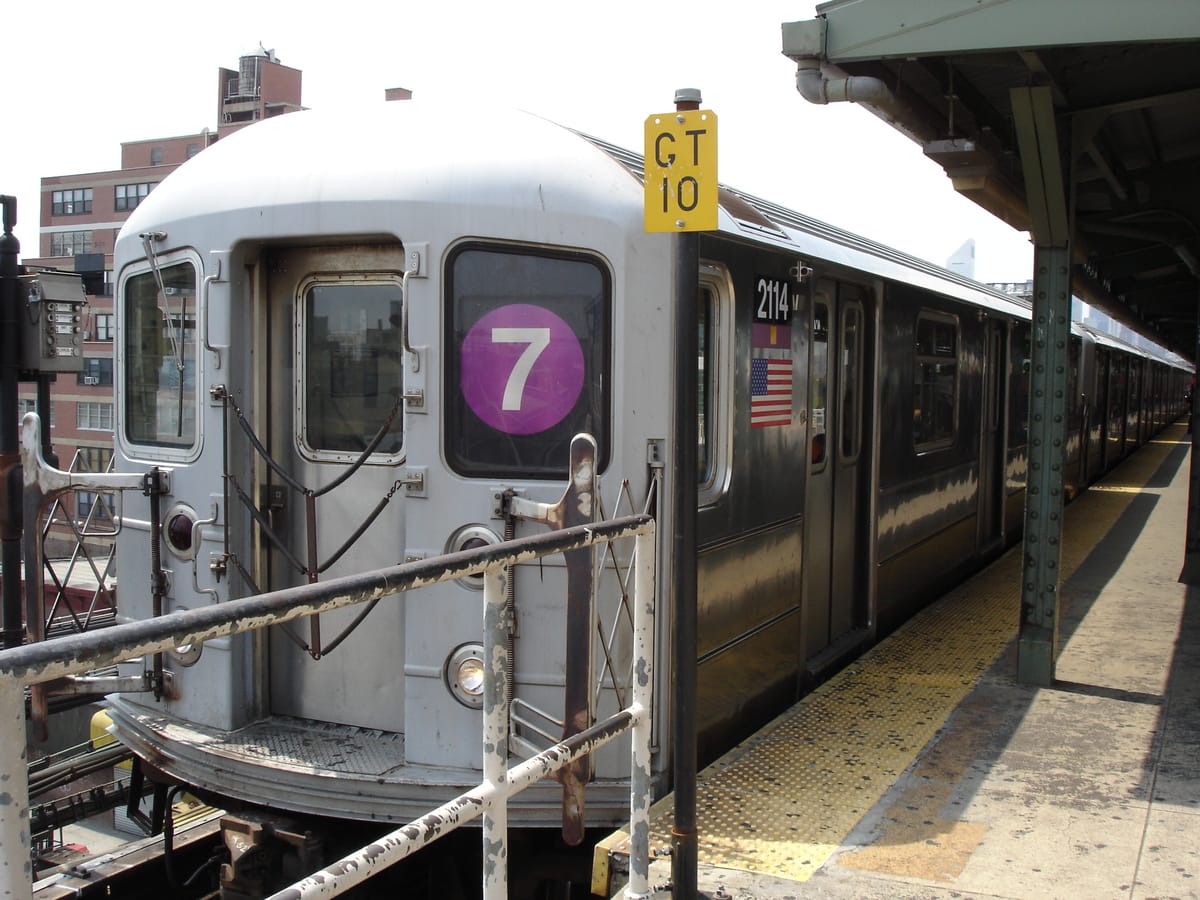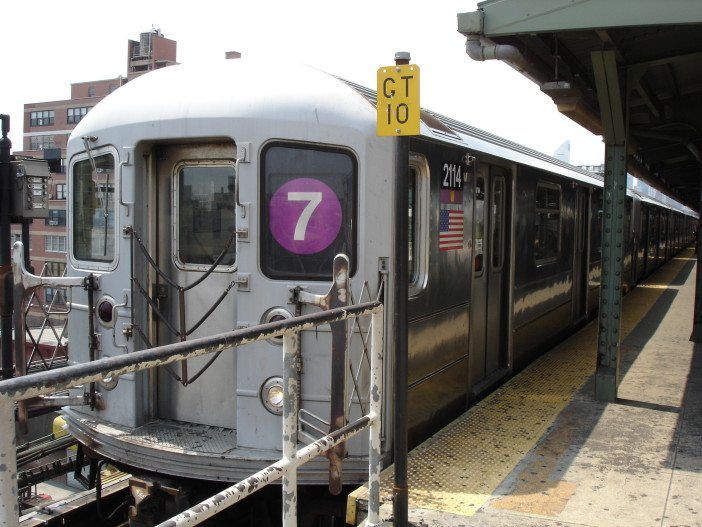The Commute: The Elephant In The Room


THE COMMUTE: Did Governor Andrew Cuomo make the correct decision to shut down the subways because of an impending blizzard that just missed New York City? No. Did Mayor Bill de Blasio make the correct decision to close all roadways to non-emergency traffic? Yes. Why the discrepancy? Because the mayor erred on the side of caution, using the best available weather information available at the time and there was a precedent to do this. It happened under Mayor Wagner around 1960. As the mayor stated, ‘It is better to be cautious than take unnecessary risks.’
However, there was no precedent to shut down the subways due to a blizzard and erring on the side of caution, as the governor claimed, was not applicable to the subways. That is because the subways run underground and the els have little problem dealing with blizzards, unless you go back to the blizzard of 1888. During heavy snowstorms, the vulnerable parts of the subway system are the open cuts such as the Brighton Beach and Sea Beach lines or surface portions such as through Broad Channel. Service on those portions is usually is discontinued first. But closing down the entire system?
The MTA has snow procedures in place to address severe weather conditions such as blizzards and hurricanes. There are different procedures depending on severity and usually involve suspending service on duplicative routes, and vulnerable parts of the system, suspending express service, as well storing subway trains underground. The MTA made the correct decision to close the system ahead of Superstorm Sandy. However, a blizzard isn’t the same as a storm or hurricane. The subway underground can flood during a hurricane. That does not happen during a blizzard.
A complete shutdown takes several days to return the system to normal operating conditions. All logic shows that during a blizzard, there is no reason to shut down most of the system. The MTA knows this and still operated trains without passengers in spite of the governor’s order. This is because there are fewer problems, such as frozen switches, if the trains continue to operate than if they stop running. That is the elephant in the room that mainstream media is not addressing. Although the subway system was closed to passengers, the trains continued to operate anyway.
The story was first reported by the Brooklyn Paper, and was then picked up by WNYC, although they did not mention anything about the “ghost trains.” Second Avenue Sagas also commented on the governor’s decision here and here. Worst of all, it appears that the governor made his ill-conceived decision unilaterally. He may have consulted the MTA, but Mayor de Blasio only had 15 minutes notice. The mass media has only raised the question if the governor made the correct decision. The MTA chairman was forced into a position, stating to the press, according the WNYC, that “it would have been too complicated to keep passenger service running, even on a truncated basis,” hours after stating that he saw no reason to shut the system down completely.
It seems that in 2014 he was also forced into making a statement to please the governor by stating that all the MTA’s needs were met, after the governor siphoned $40 million in transit money. There seems to be a pattern developing here. That the governor is running the MTA, not the MTA chairman, and the chairman must back his boss.
The NY Times and WPIX were the only mainstream media outlets to have the guts to suggest that, by inconveniencing many as well as costing the city $160 million in lost labor alone, the governor screwed up. It was especially wrong since the trains operated anyway, albeit without passengers.
Why Did The Governor Make That Decision?
It was because he did not trust the MTA. I do not know how the MTA chairman feels about this. However, if I were him, I would not be too happy about it. There has been some speculation regarding the governor’s decision. That speculation revolves around his own political ambitions rather than public safety. The MTA screwed up during the blizzard of 2010 by having to pay out on a lawsuit whereby hundreds were stranded on trains for many hours in the Rockaways. However, they learned from that mistake by changing their procedures and it was not likely they would repeat it again. Cuomo was just afraid if passengers were stranded again, voters would remember this in a future presidential election, should he choose to run.
Not The First Time The Governor Overruled The MTA
He did the same thing when recently announcing he was going to build an airport link to La Guardia as well as the route it would take, which many believe is the incorrect route, from the #7 line at Willets Point. An extension off the Astoria line, as well as other routings, have been longed talked about; many believe one of those would be a better choice. This Second Avenue Sagas article discusses the flaws in Cuomo’s plan and provides some very interesting links. The plan also has sparked a heated discussion on Subchat.
Is the governor thinking about what is best for commuters or what is best for Willets Point developers? Would passengers even save any time over the existing choice of taking the N or Q and changing for the M60 SBS? That trip takes about 45 minutes from Lexington Avenue and 59th Street including waiting time. That same trip on the #7 from Grand Central would take about 42 minutes, including waiting, assuming five additional minutes on the new airport link. If a transfer is required, several additional minutes would be needed. Why spend nearly half billion dollars if no time is saved for the majority of users? Apparently the governor isn’t interested in cost benefit studies.
The MTA has an entire planning department. New York City Transit has its own planning department and there is also the MTA Capital Construction Company. They should have the final say in what gets built after they solicit public input. It is not the governor’s job to bypass the public and the MTA by acting as supreme dictator. After all, that was former Mayor Michael Bloomberg’s job.
When something needs to be built, we must have countless studies and endless community participation with all the NIMBYs registering their protests. Then there is the long process of obtaining the funding. The result is that the project never gets built or is watered down so as to not really solve the problem it intended to solve. An example would be Airtrain, which never provided a one-seat ride to JFK from Manhattan.
However, when a powerful mayor or governor wants a project, like the #7 extension or LaGuardia access by rail, the funding magically appears and community participation disappears. This is not how planning should be done. Nor should a governor have the right to close down the subways for his own political reasons. When mass transit funds are misspent, it becomes more difficult to obtain additional future funds.
Now: will anyone remember in 2020 or 2024 what the governor did in 2015?
The Commute is a weekly feature highlighting news and information about the city’s mass transit system and transportation infrastructure. It is written by Allan Rosen, a Manhattan Beach resident and former Director of MTA/NYC Transit Bus Planning (1981).
Disclaimer: The above is an opinion column and may not represent the thoughts or position of Sheepshead Bites. Based upon their expertise in their respective fields, our columnists are responsible for fact-checking their own work, and their submissions are edited only for length, grammar and clarity. If you would like to submit an opinion piece or become a regularly featured contributor, please e-mail nberke [at]sheepsheadbites [dot]com.




